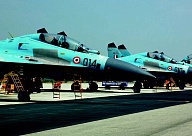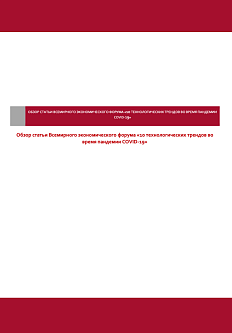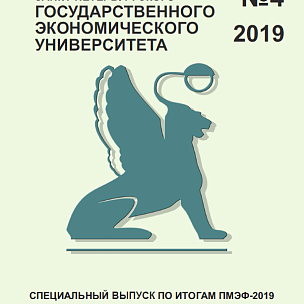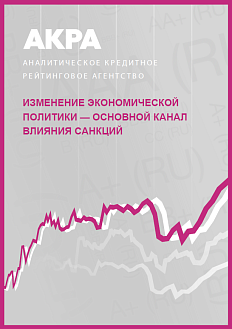Currently, there is no doubt that by the end of this year, India will once again take first place on the list of Russias largest arms buyers. According to Deputy Director of the Federal Service for Mil- itary-Technical Cooperation (FSMTC) Vladimir Drozhzhov, Russia currently has a large portfolio of orders for the delivery of Russian military hardware to India approximately worth USD 14 billion. And that is only counting existing contracts, where the advance has been paid or task-specific work has begun. There is also a large number of prospective bilat- eral agreements in the defence sector, including intergovernmental agreements, with a total estimated worth of at least USD 5.75 billion. Indian authorities have already reserved the necessary funds in their defence budget, which means that the corresponding contracts should be signed in the near future. Consequently, the total worth of all Indian orders of Russian military hardware is closing in on USD 20 billion. This is one of the most positive figures throughout the entire history of military hardware cooperation between the two countries. It is only surpassed by 2015, when India ordered almost USD 26 billion worth of Russian military hardware.
In its military hardware cooperation with India, Russia was one of the very first countries in the world to transition from a traditional trade paradigm to an industrial-technological model
Triumph of the industrial paradigm
By the end of 2019, India will top the list of purchasers of Russian weaponry, with the total amount of orders approaching USD 20 billion
Such success on the part of Russian arms manufacturers is fairly easy to explain. In its military hardware cooperation with In- dia, Russia was one of the very first coun- tries in the world to transition from a tra- ditional trade paradigm to an industrial-technological model. In other words, Russia was not just selling ready-to-use hardware, but also sharing technology for its production, organising joint manufac- turing ventures, and even arranging for joint R&D. That is how, almost 20 years ago, BrahMos Aerospace JV came into existence. The joint venture (JV) develops and manufactures supersonic cruise missiles that can be ground-, air- or ship- launched. The JV was established by NPO Mashinostroyeniya and Indias Defence Research and Development Organisation (DRDO). What is more, India has con- trol of the JV as majority partner, while the Russian ended up owning just 49.5% of the shares. It is no secret that the JVs engi- neers based some of the BrahMos missiles key technological solutions on the Russian P-800 anti-ship cruise missile (also known as Oniks). Russian specialists were responsible for developing the propulsion system and target seeker, while Indian specialists, having received Russian know-how, polished off the control system and developed new software. In the meantime, the mis- siles range was increased from 290 km to over 400 km. Also of note is the fact that the air-launched BrahMos-A missiles were notably lighter than their land-launched counterparts. Their starting weight is now just under 2.5 tonnes, and they reach Mach 2.8 (3,430 km/h) during their ter- minal flight phase. About seven years ago, BrahMos Aerospace received a USD 930 million contract from the Indian Ministry of Defence for the manufacture of 200 missiles. The land-based weapon complex is already in the possession of several of the Indian Armys missile brigades. In May of this year, the Indian Air Force conducted their second successful test fire of a BrahMos-A missile from a Su-30MKI fighter aircraft, during which the missile made a direct hit on a test range located on the Nicobar Islands in the Bay of Bengal. It has already been decided that 40 Su- 30MKI will be equipped with BrahMos-A missiles. Work towards this end is already underway. «Our enterprises are at full ca- pacity; the order book up to 2023 from the Indian Armed Forces alone is worth USD6.5 billion,» said Alexander Maksichev, BrahMos Aerospace Co-Director. Howev- er, it is now clear that the JV is about to receive a sharp uptick in orders as soon as it completes development of its new hypersonic missile, the BrahMos-II, which is capable of reaching speeds of up to Mach 5. There is no doubt that this will occur in the next five to six years. In its work on the BrahMos-II, India is planning to use all of the developments made by Russian engineers working on the Zircon hypersonic missile, which has already had successful test-launches. Despite that fact, Russia will no longer be a direct technological donor to the JV. According to Praveen Pathak, Chief General Manager (Market Promo- tion and Export), in this joint venture, ap- proximately 60% of the cost of a missile falls on Indian enterprises, with the other 40% going to Russian ones. Following the creation of the BrahMos-II, the Indian share will increase even further.
Moscow and New Delhi settled on us- ing a similar model for the Indo-Russia Rifles Private Limited (IRRPL) joint ven- ture to manufacture AK-203 assault rifles in the Amethi district of the state of Uttar Pradesh. The Indian Ordnance Facto- ry Board (OFB) owns 50.5% of the shares of this company, while Kalashnikov Group and Rosoboronexport received 42% and 7.5% of the shares, respectively. In March, the new manufacturing facility was in- augurated by Prime Minister Narendra Modi himself. «The AK-203 is the latest derivative of the legendary AK-47 ri- fle, which will be used by our armed forces and give Amethi district a new identity,» said the Indian leader. It is already known that India plans to directly purchase approximately 50 thousand AK-203 rifles and manufacture another approximately 695 thousand rifles at IRRPL, using Indian parts. This order is worth approximately USD 550 million. «The production capacity of this new facility should be enough to completely equip the Indian armed forces,» says Alexander Mikheev, Rosob- oronexport Director General. «Moreover, if necessary, the two parties can negotiate both an increase in production volume, and the release of prospective, improved models on the unique Kalashnikov rifle platform.»
Lastly, yet another example of Rus- sian-Indian industrial partnership is the newly created joint venture for manufac- turing Ka-226 light helicopters near Nag- pur in the state of Maharashtra. Russian Helicopters will supply India with the tools for creating the choppers, but at least half of the parts will be manufactured in India. «This is the first high-tech project implemented by the Indian government as part of the Make in India initiative,» said Rostec CEO Sergey Chemezov. Initially, the new JV is expected to manufacture anywhere from 10 to 20 helicopters a year, after which production will increase to at least 35 aircraft a year. Indian authorities have already ordered 200 Ka-226 helicop- ters worth a total of just under USD 500 million. «However, in the future, the programme may be expanded the parties are already considering the option of entering third-country markets with the product,» said Chemezov.
 PRIME MINISTER OF INDIA NARENDRA MODI:
PRIME MINISTER OF INDIA NARENDRA MODI:We regard the Arctic as another area wher we can collaborate with Russia. We would like to broaden our cooperation with Russian regions, especially the Far East.
Launches on all fronts
Speaking of which, in addition to creating joint ventures, India has drastically increased its purchases of ready-to-use military hardware from Russia. At the end of last year, the two countries signed a number of large contracts, including an agreement to deliver five regimental sets of S-400 air-defence missile systems worth USD 5.43 billion and two Talwar-class frigates worth USD 1.2 billion. India will construct another two such frigates using Russian blueprints at its own shipyard in Goa.

Last year, India signed a long-await- ed agreement with Russia regarding the long-term lease of Project 971 submarines equipped with a special power unit. The Indian Navy will refer to the submarine ast he Chakra III. This contract is worth over USD 3 billion. But that is not all. Almost immediately after the Indian-Pakistani armed conflict in the skies above Kashmir, Indian authorities sent an official applica- tion to the FSMTC for the purchase of 18 Su-30 fighter aircraft kits for assembly at Hindustan Aeronautics Limited (HAL).
The Indian Air Force also expressed a desire to swiftly purchase 21 MiG-29 fighter aircrafts from the Russian Ministry of Defence. Current estimates suggest that these aircraft will cost just under USD 2 billion. It is worth noting that approx- imately 50 MiG-29 aircrafts, or three squadrons, are currently in operation in the Indian Air Force. This new deal should increase that number to four squadrons (in India, 18 aircraft make up one squadron). When it comes to the Su-30, India currently has just under 250 such planes, or 13 fighting squadrons. After this new order, that number will increase to 14. This is of fundamental importance. The thing is, In- dia already has an enormous fighter deficit of over 250 aircraft. As a reminder, according to Indian Air Force plans, they must be in possession of 42 fighter squadrons in or- der to lead a fight on two fronts. However, they currently only have 31. What is more, 14 of these squadrons are composed of outdated MiG-21, MiG-27, and Jaguar aircraft, which should all be written off by 2020. As a result of improper maintenance and a lack of replacement parts, many of these planes have a hard time getting off the ground and, if they are successful in doing that, the flights often end in accidents. The problem, however, is that there is practically nothing to replace them with. The new Indian-made Tejas fighter aircraft did not meet expectations, while the purchase of 36 Rafale fighter aircraft from France ended up being prohibitively expensive, costing almost USD 200 million per plane. Additional Rafale purchases are unlikely. So, India has to set its hopes primarily on Russia. And not just in arms, but in areas such as nuclear energy.
Additional Rafale purchases are unlikely. So, India has to set its hopes primarily on Russia. And not just in arms, but in areas such as nuclear energy
The Clean Well at triple power

One of the largest Russian-Indian in- vestment projects is the construction of the Kudankulam (Clean Well) Nu- clear Power Plant in the southern Indian state of Tamil Nadu. The NPP is pow- ered with Russian VVER-1000 reactors. The first reactor unit became operation- al in the summer of 2014; the second followed along in the fall of 2016. Kudankulam is already considered the most powerful NPP in India, producing almost 2,000 MW of electricity a year. However, in the next few years, the plants capacity is expected to at least triple. Five years ago, Moscow and New Delhi signed a contract for the construction of the second phase (third and fourth reactors) of the NPP. This project is estimated to cost a total of USD 6.4 billion, USD 3.4 bil- lion of which is loaned by the Russian party. Thanks to this deal, Russian companies had the opportunity to supply almost 85% of the necessary equipment for the
new plant and perform the most vital operations, excluding certain con- struction work. Indian industry also got in on the action. «While the construction of the first two reactor units was not at all localised, India currently has the nec- essary capacities, so the second phase will go somewhat differently,» said Ramayah Shanmuga Sundar, Director of the Kudankulam NPP, «as before, Russia is manufacturing the reactor pressure vessels and certain heavy machinery, but, for example, at least 30% of the work on the design portion will be done by the In- dian party. Moreover, India will produce the compressors and electrical equipment for the second circuit.» The second phase of construction has now entered a critical stage. Izhorskiye Zavody have already delivered the third reactor pressure vessel and its protection system to India; Atommash has delivered the first steam generators for the heat exchanger system, and ELSIB has delivered four asynchronous motors for the pump units. If the installation and testing of all the systems go successfully, the third reactor unit should enter into operation in 2020, with the fourth following along in 2021.

But that is not all. As a reminder, two years ago, Atomstroyexport and the Nuclear Power Corporation of India Limited (NPCIL) signed an agreement for the third phase of construction at Kudankulam NPP, during which fifth and sixth reactors should be constructed and launched in 20242025, which will take the total capacity of the plant to 6,000 MW. Just a few days ago, it was reported that Russia is extending USD 4.2 billion in credit over ten years for this project. Indian industrys share of participation will also drastically increase. «We hope to work more closely with Indian companies,» said Atomstroyexport President Valery Limarenko.«When it comes to the third phase of the NPP, here (the Russian party is) talking about delivering the nuclear island and the turbine island.» Whereas, the construction and assembly, design, and production of some equipment will be handled by India. Rosatom plans to construct a total of 12 reactor units with an individual capacity of 1,000 MW in India. If these plans go successfully, it is highly likely that the share of nuclear energy in Indias overall energy balance will increase from 3.22% to at least 5%.
The Largest Existing and Prospective Contracts for Indian Purchases of Russian Arms









